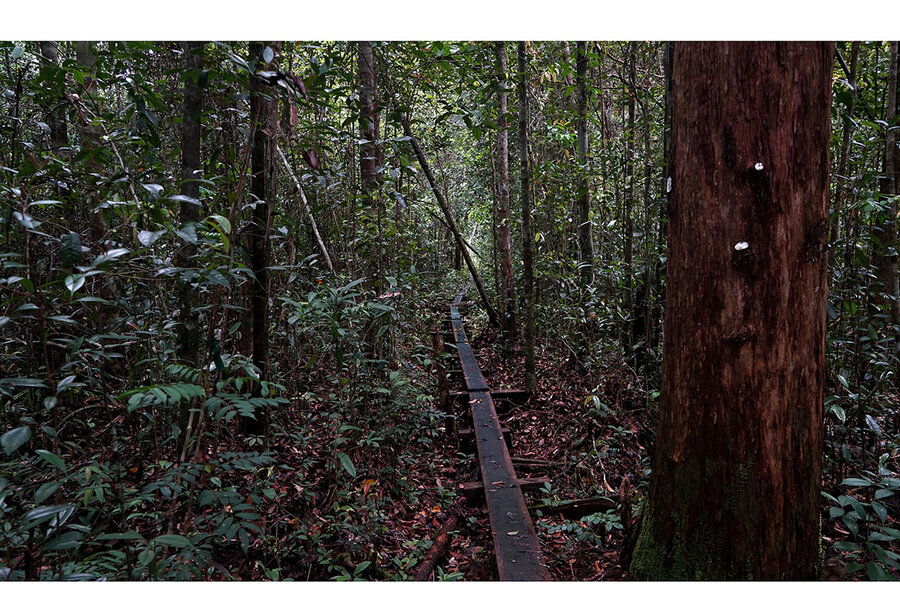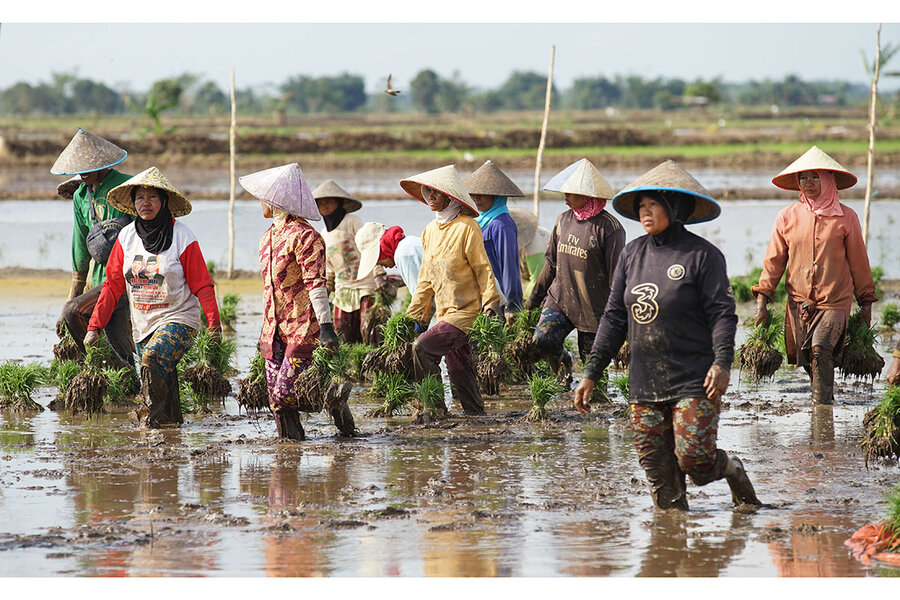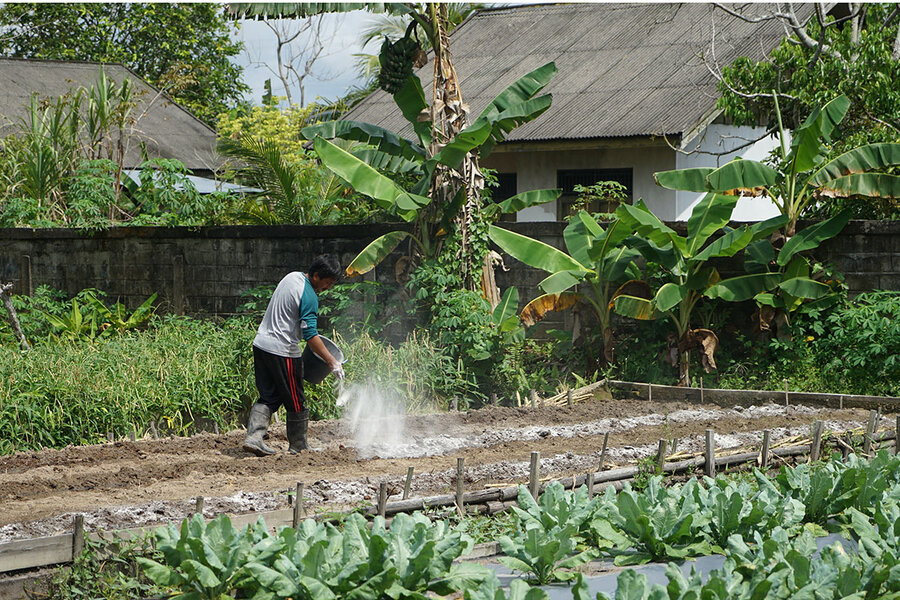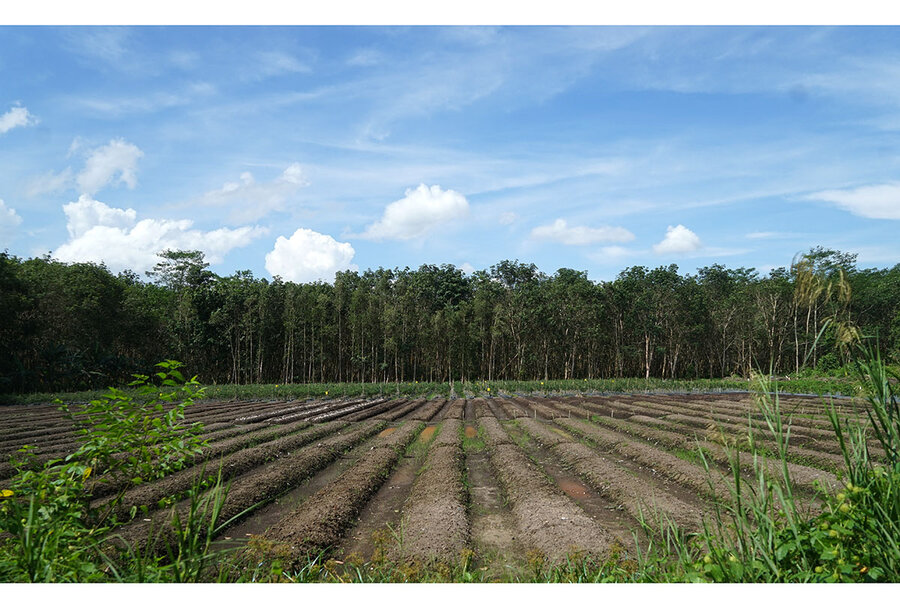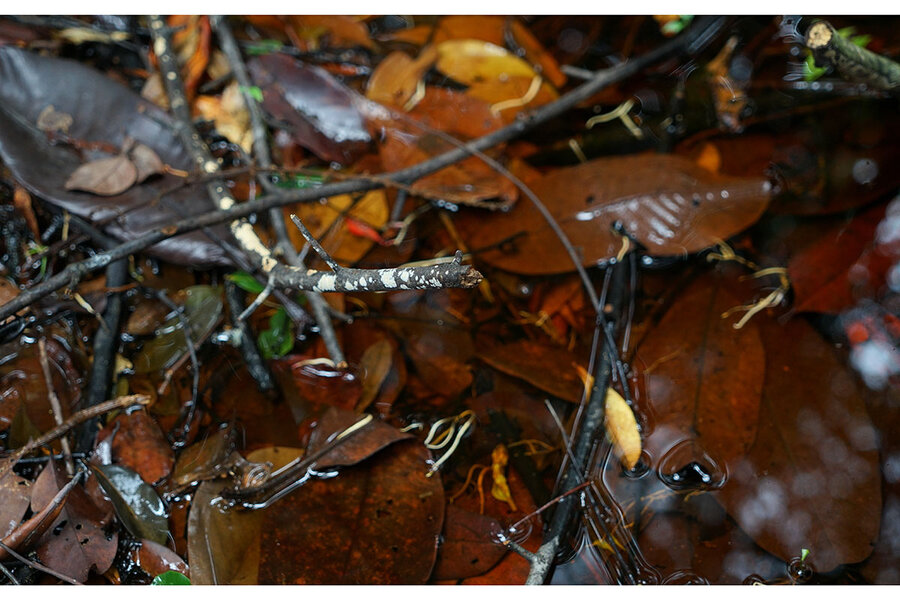Why Indonesia’s rice paddy expansion is raising climate concerns
Source: The Christian Science Monitor
Date: May 20, 2021.
By canoe, it's a 20-minute ride from the nearest village to the last piece of paradise in the heart of Borneo.
The destination is a small research station in a tropical forest that is home to orangutans, proboscis monkeys, majestic hornbills, rare and unusual pitcher plants, and insects in a staggering range of forms and colors. The river is pitch-black, and the sky is reflected on its surface. The final approach is an alley of lush forests; sunlight filters through the trees and lights the way to a gated entrance.
The research station lies in Sebangau National Park in Central Kalimantan, one of the island's last undisturbed peat-swamp forests. Scientists say this kind of forest plays a crucial role in mitigating climate change because it grows on peatland, a soil made of partially decomposed organic matter trapped in the water for thousands of years. The tannin-rich water prevents microbes from fully decomposing the matter and releasing carbon dioxide into the atmosphere.
So far, Sebangau has been spared the fate of other carbon-rich forests that were cleared for rice production in the 1990s. Under President Suharto, Indonesia converted 1.6 million hectares (almost 4 million acres) of peat forest for his Mega Rice Project, which became one of the biggest agricultural catastrophes in modern times. The rice failed to grow in acidic soil, and the irrigation canals that were built drained the waters that had inundated peat forests.
The result: parched peatland that burned repeatedly, spreading haze across Southeast Asia.
Indonesia's recurrent peatland infernos not only pose a dire threat to the health of its people and its neighbors. They also cause major spikes in Indonesia's carbon emissions that contribute to the global climate crisis. In 2015, Indonesia ranked fourth in the world for greenhouse gas emissions, ahead of industrial powerhouses like Japan and Germany.
And, just as the clearing of the Amazon River basin depletes the capacity of its tropical forests both to soak up and to retain carbon, the mismanagement of peatland in Indonesia makes it harder to curb its emissions.
Indonesia's parched peatland accounted for 76% of its forest fires in 2019, according to an analysis by David Gaveau, a landscape ecologist who studies deforestation. In the same year, at least half of the mega-fires in Borneo, an island larger than Texas, started in Central Kalimantan, says Fatkhurohman, a spatial-planning consultant in Palangkaraya, the provincial capital.
Now President Joko Widodo has a plan for this degraded land: Plant rice in vast quantities so that a nation of 276 million people always has enough to eat. The promise is that rice cultivation on Borneo will also spread prosperity and help prevent forest fires.
Put simply, this time will be different. Or so the story goes.
President Widodo's government insists that technology and better planning will make his project succeed where Mr. Suharto's failed so spectacularly. It's a high-stakes strategy that has consequences far beyond Indonesia's borders, given its outsize greenhouse gas emissions.
At the Sebangau research center run by the Center for International Cooperation in Sustainable Management of Tropical Peatland (CIMTROP), the new rice-planting project is cause for concern. Kitso Kusin, a senior researcher, says Indonesia needs to conserve its remaining peat-swamp forests like Sebangau and to replant the degraded peatlands with native trees. He and other critics worry that agricultural land conversion on a mass scale could lead to more devastating fires and deadly haze.
There are also serious questions about the effectiveness of the technology that underlies the government's ambitious production targets. Is it really different this time? And what happens to farmers if the peatland resists their efforts?
Mr. Suharto's rice project "made Central Kalimantan into a source of disaster," Mr. Kusin says. If the new one fails, he warns, "we're going to be the victims again."
Food estates larger than Connecticut
Indonesia's plan to produce rice and other food crops was initially framed as a response to the pandemic and the risk of international food shortages. "Providing food stocks is a strategic agenda that we need to adopt to anticipate a food crisis [caused] by the COVID-19 pandemic," Mr. Widodo said in September 2020.
Mr. Widodo's proposed food estates would eventually cover an even larger area than Mr. Suharto's: at least 2 million hectares of land on the island of Sumatra and in Kalimantan, a combined area larger than Connecticut. The first stage is to plant rice on 165,000 hectares of former Mega Rice Project land in Kalimantan.
Yiyi Sulaeman, the head of the Ministry of Agriculture's Wetland Agriculture Research agency, says this stage of the project is feasible because the peatland has been consumed by repeated fires, leaving only a thin layer of peat and mineral soil on which to plant rice.
Mr. Sulaeman says the project can also be a strategy to prevent forest fires. "If we keep on neglecting these degraded lands, the chance of forest fires is higher," he says. But when the land is used for farming, the farmers will look after it and put out any wildfires.
Researchers at the Ministry of Agriculture have developed a range of homegrown technologies to improve the soil and boost productivity. These include organic fertilizers to decrease soil acidity and peatland-friendly rice variants designed to have higher yields and to resist disease, says Susi Susilawati, an agriculture ministry researcher in Palangkaraya.
"Modern tools are needed"
To test its technology, the Ministry of Agriculture is using a 1,000-hectare rice-growing area in Belanti Siam as a showcase for the entire food estate project. Its researchers are helping farmers there to apply their research to peatland crop production.
Last October, Mr. Widodo visited the site and spoke optimistically about the program's prospects in Central Kalimantan, referring to fertilizer-spraying drones and floating tractors designed to plow two hectares of land a day. "This [technology] is an acceleration of speed because we are going to work on a very vast area," he said. "Mechanization and modern tools are needed."
On a recent cloudy afternoon in Belanti Siam, there was little sign of this acceleration of speed – and indications that not everything was going to plan.
Farmers were working the rice fields but without the promised new technologies. No floating tractor could be seen, only manual plows.
Most of the farmers are migrants who moved here in the 1990s and at first struggled to grow rice on cleared peatland; the recurrent fires eventually made it feasible to plant. Now blocks of yellow and green rice paddies stretch to the horizon. Some farmers wore conical hats, and the afternoon breeze gently lifted them from their heads. As they pulled rice seedlings from the soil, they chatted and laughed.
Ahmad Darmaji, one of the farmers, said they were using a variant called Hibrida Suppadi 89 that is known by farmers to resist pyrite, a toxic compound found in degraded peatland. The variant came not from the government but from a commercial distributor.
Safrudin Mahendra, the director of Save Our Borneo, a conservation nonprofit, says many farmers in Belanti Siam are now reluctant to use technologies supplied by the government. He found that those farmers who did follow the government's guidance had disappointing results.
"Several farmers' groups whom we met in Belanti Siam did not harvest anything at all," he says.
Earlier plantings, lower yields
While one of the government's variants worked well, many did not, says Heriyanto, a farmer who owns three hectares of land at the site, in a phone interview. The variant that he was given produced a much lower yield.
"It was an extraordinary drop. I could usually get eight to nine tons per two hectares with Suppadi 89, but I only got two tons of rice" per two hectares, he says. Mr. Heriyanto, who like some Indonesians goes by one name, adds that his crop was infected by a fungus.
Mr. Safrudin says the food estate project is flawed because Jakarta hasn't clearly set out the rules, and its approach is confusing farmers. For example, he says, the government pressured farmers to plant earlier than usual last year, in October, so as to be able to harvest three crops a year rather than two.
That meant that farmers did not wait – as they normally do – until the season of high winds (and mouse reproduction) was over. The result? The paddies failed to produce.
That is a warning signal for what lies ahead, he cautions.
"We've already seen a failure," he says. "And if it fails on the showcase site, what will happen in other areas that have never been used since the 1990s?"
Ms. Susilawati, the government researcher, insists that planting did not start until late November, pointing to a schedule at her agency's base camp in Belanti Siam. But that is not how Mr. Heriyanto and other farmers remember it.
Ms. Susilawati told the Monitor that the first planting cycle was a success because the average yield was 4.6 tons of rice per hectare. She admits that some variants produced low yields and contracted diseases, adding that extreme weather led farmers to harvest prematurely. Heavy rains also caused humidity and disease. But crop failures only occurred on 26 hectares, or less than 3% of fields, she says.
Ms. Suilawati says farmers at Belanti Siam are still eager to plant her agency's new rice variants. As for the floating tractors, that's not her agency's role. "We only teach farmers how to use this mechanization," says Ms. Susilawati. She adds that farmers are already using two tractors for land preparation.
Irrigation risks and rewards
But the challenge of converting Indonesia's peatland for sustainable food production goes beyond a lack of tractors and reliable rice variants.
When he visited other project sites last year in Talio and Dadahup villages, Mr. Kusin found that their crops had failed to thrive. In those sites, the problem is irrigation: Too much water leads to flooding, but insufficient water means pyrite will poison the crops.
Mr. Sulaeman says this problem can be managed. The government is now revitalizing irrigation canals built in the 1990s. This system is "designed by experts on soil science and hydrologists. ... It won't create negative environmental impact," he says.
Still, Mr. Kusin worries that this could be a double-edged sword since canals built around deep peat areas could deplete the carbon-rich water. "Canals always decrease the height of the water table," he says.
More dried-up peatland means a greater risk of fires that spew more carbon and toxic haze into the atmosphere, which experts say have caused respiratory illness for millions of people across Southeast Asia. But those who have suffered the most are the residents of Central Kalimantan.
These include Mr. Kusin's colleagues. One of them is CIMTROP's founder, Suwido Limin, an agricultural professor at the University of Palangkaraya who spoke out against Mr. Suharto's mega project. Since the 1997 haze disaster, not only did Mr. Limin study the science of peatland restoration in his lab, but he also went into the field to fight wildfires and to block canals that were depleting peat swamps.
He died in 2016 after being diagnosed with a cancer that his colleagues believe was the result of his repeated exposure to fires and haze.
Mr. Kusin worries that if the food estate continues without careful planning, "our struggles would be in vain," and "it's us, [the people in Central Kalimantan], who will suffer again."


